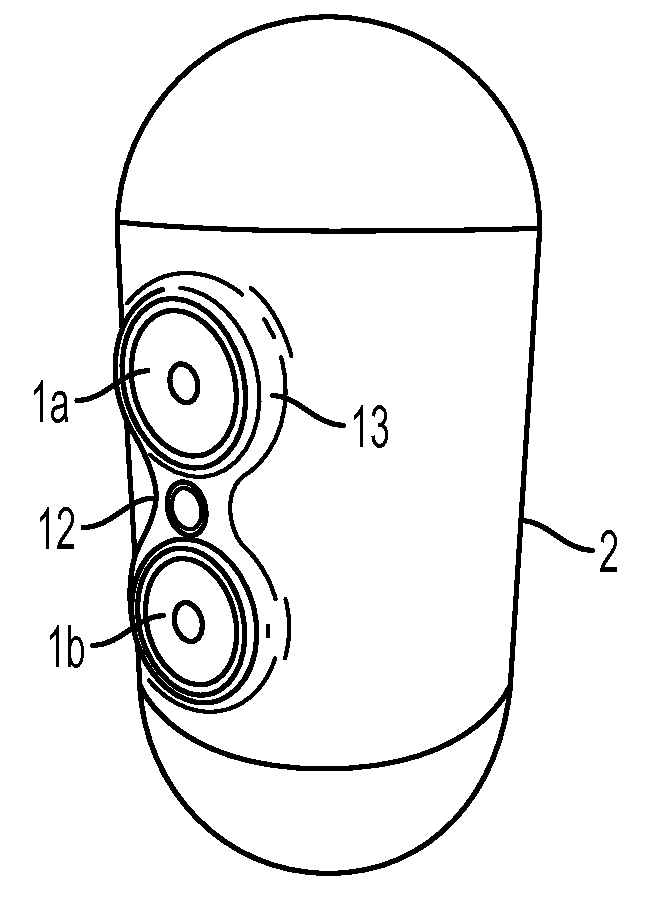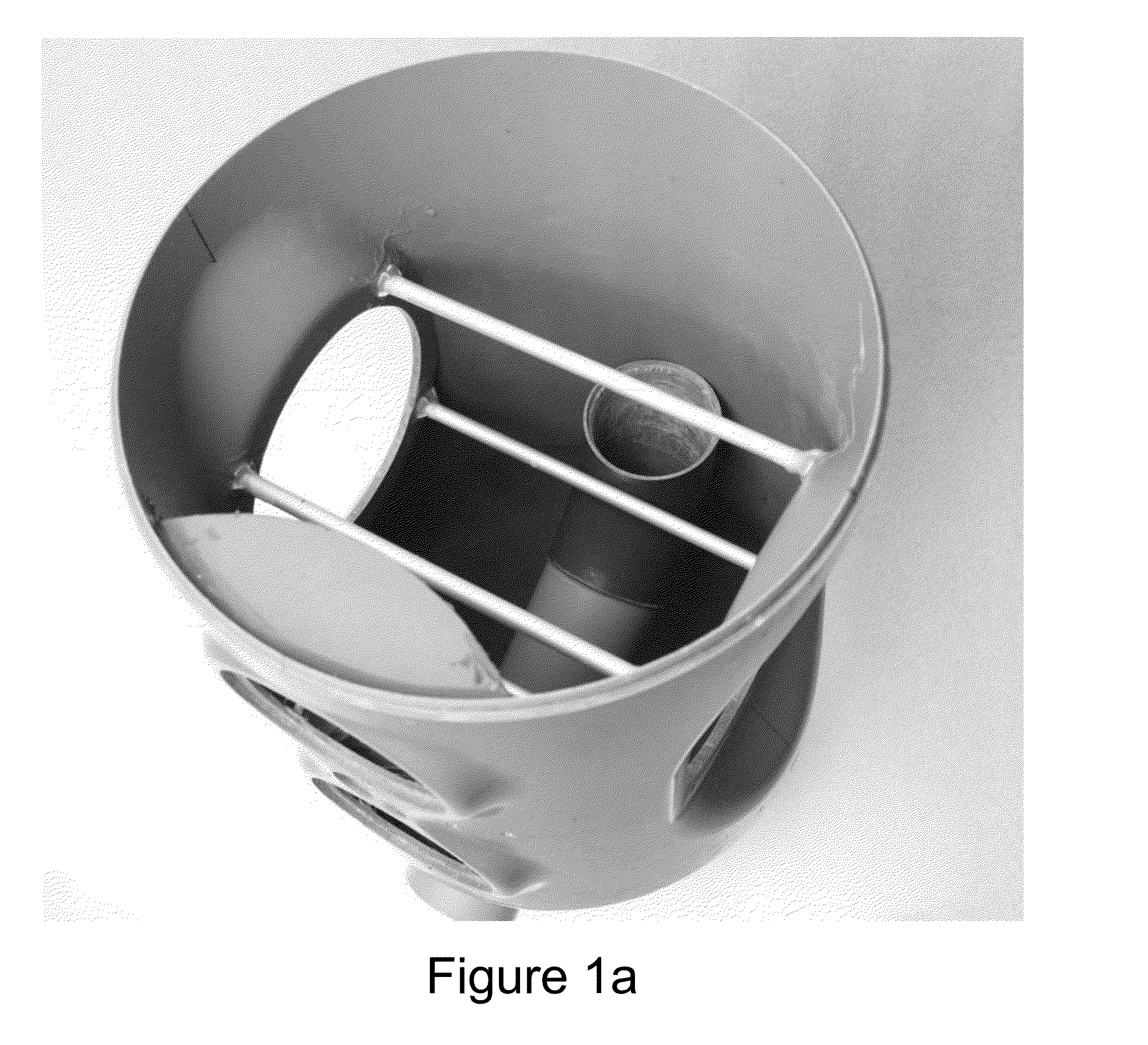Helmholtz resonator loudspeaker
a helmholtz resonator and loudspeaker technology, applied in the field of loudspeakers, can solve the problems of acoustic or practical problems, the mounting of drivers, and the detrimental effect of both the measured frequency response and the directivity of the loudspeaker
- Summary
- Abstract
- Description
- Claims
- Application Information
AI Technical Summary
Benefits of technology
Problems solved by technology
Method used
Image
Examples
Embodiment Construction
[0020]FIG. 1 shows a perspective view of one embodiment in the prior art, where loudspeaker driver 1 is mounted on a tubular main enclosure 2 by means of a tubular component section 3.
[0021]FIG. 2 shows a top view of the prior art loudspeaker depicted in FIG. 1, with driver 1 attached to a tubular component section 3, intersecting with the tubular main enclosure 2 at opening 5. It can be seen that in two instances there are sharp transitions: first along the rim 8 of driver 1, and second where the tubular component section 3 attaches to the main enclosure body at opening 5.
[0022]FIG. 3 shows a top view of an improved way of attaching driver 1 to tubular main enclosure 2 by means of a round flange 6 that is defined by two curvatures. The first curvature is where driver 1 attaches to the flange 6 at outer circumference 7, where the edge of flange 6 curves from the vertical plane of driver 1 towards the tubular main body 2 in a gradual way, distinguished from the sharp corner shown in ...
PUM
 Login to View More
Login to View More Abstract
Description
Claims
Application Information
 Login to View More
Login to View More - R&D
- Intellectual Property
- Life Sciences
- Materials
- Tech Scout
- Unparalleled Data Quality
- Higher Quality Content
- 60% Fewer Hallucinations
Browse by: Latest US Patents, China's latest patents, Technical Efficacy Thesaurus, Application Domain, Technology Topic, Popular Technical Reports.
© 2025 PatSnap. All rights reserved.Legal|Privacy policy|Modern Slavery Act Transparency Statement|Sitemap|About US| Contact US: help@patsnap.com



